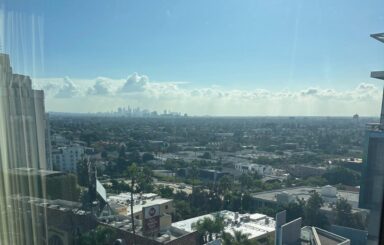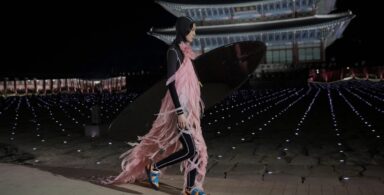Viola and Philippo, founders of Natural Rough, reveal in this interview amazing stories of oversea craftsmanship and several travel tips…
Editing and translation by: Fiammetta Cesana
Messy, salty hair, bare feet on the sand, sunburned skin, and flattering clothes… Summer and its exotic frames bring us back to a primordial and free-minded way of being and appearing. Let’s see how Natural Rough enhances the wild and spiritual beauty of this season by creating ethnic garments, from capes to t-shirts, pants and accessorizes, all handcrafted with natural fabrics and chemical-free production.
We met Viola Melpignano and Philippo Gifford, a resourceful couple of best friends which founded Natural Rough in 2017. They aim to make people love and support the inimitable work of small artisans around the world, giving fashion new social and cultural relevance. They told us fascinating anecdotes about indigenous communities and their lost paradises, and gave their logbooks on the cities that are shaping the brand’s identity.
Natural Rough is a way to wear not just a dress but a piece of world…
Viola: Each piece of our collections comes from the work of craftsmen from Africa, Venezuela, Colombia, Guatemala…Their fine traditional techniques of combining lines, colors and textures merge into our clothes in a new and contemporary context. It’s a long work and requires excellent manual skills. Hand-knotted clothes, for example, take about one or two months to be completed. At the end of the day, they are all one-of-a-kind pieces. As being made by hand and not by machines, they always differ for something, like color tones, stitching, or embroidery… Each garment is always a new discovery and creates a unique connection between the consumer and lost places around the world.
Whose the idea was it to create the brand?
Viola: Of both! We’ve been best friends for thirty-eight years, and when we lived together in Miami we decided to do something together. He has worked in the fashion industry for twenty-five years, working for Custo Barcelona, Sandro and Maje, and I come from the hotel trade with my family’s Apulian masserie, but I’ve always had a passion for fashion … However, we don’t define Natural Rough as a mere fashion brand… it’s something much more personal. It’s a long project.
Your clothes represent a real opportunity for artisans living in poor and godforsaken places.
Viola: Most of them live outside the city, in the desert: they have neither water nor light. They need everything: medicines, food, toothpaste, toilet paper … We received the first order with some wax poured on it, since they normally work at night with candles … Philippo then, as well as other first necessities, brought them some lamps that are recharged with sunlight. We do our best to help them.
Do you rely on some organizations to select the artisans?
Philippo: No, we do everything by ourselves. It was, and still is, a long anthropological journey. We started in Venezuela, that now it is very complicate to get in, but thanks to some local contacts and, of course, to fate, we were able to enter desert places and met communities of artisans. We started to bring them fabrics and build up a relationship of trust. As somehow they are all related between each other, they suggested us to go to an aunt or a niece who could do a specific type of sartorial work. So we moved to meet them, crossing different areas and giving life to our project. We reached Maracaibo, a wonderful place on the border with Colombia. There we met an indigenous community of women artisans, the Wayuu, with whom we are working closely.
And how do you actually collaborate with the Wayuu?
Philippo: We provide them with all the raw material and fabrics. Later we work together on the graphics and give them some ideas that they will interpret personally. When you work with artisans you can’t tell them “give me this”, but you have to understand how they can actually bring your ideas to life. The spider’s drawing on the bags, for example, belongs to the Wayuu tradition.
Do you always travel together?
Viola: Not always. As Philippo cares about the artistic direction and production, he travels more in the areas of our artisans. I manage the commercial and administrative department instead, so I usually travel where there are the stores selling our clothes, such as Los Angeles, Tulum, Apulia and Ibiza.
You are a great mix of cultures by combining Italian linens and cottons with oriental embroideries and craftsmanship of African and South American communities…
Philippo: Yes, and it has been hard to convince local people to work with materials they weren’t familiar with. The work of the artisan, you know, is extremely methodic and strictly linked to traditions. In South America, for example, they don’t have linen, but cotton at best, so they weren’t happy when we showed them the Italian linen… Proceeding with our anthropological commitment, we had to understand the story of their traditional techniques, be respectful for their work, and then convinse them to work with something new. We explained them our intention to make known their work on the other side of the world. So finally, I ended up to have a very nice and collaborative relationship with them.
Did you have any difficulty moving around in these areas and communicating with them?
Philippo: Now we are going less to Venezuela, since we had some big frights … there, the police in the first place is corrupt and dangerous, and we always move with escorts and armored car. The Colombia-Venezuela border is closed, only these indigenous people are free to pass as they were settled there before the states’ establishment, so they can enter from one side to the other without a passport. So we now have moved more on the Colombian side where a local person always accompanies us. Here it is less dangerous but you must still be careful and take some precautions. I speak Spanish fluently, but I don’t have Colombian accent and initially this caused mistrust among the local artisans.
That’s a really long and gradual project … what is going to be the next step?
Philppo: Exactly, it’s a project, so as it starts you don’t know how it’s going to end. Now we are planning to expand in Ecuador. We want to increasingly strengthen this bridge between the public and artisan communities.
What exactly is your audience?
Phillippo: We assume that you are not the one to find our product, but that is the product itself to find you. Obviously they are clothes that require a strong personality to be worn. They are all dresses preserving a tradition of five hundred years and that according to the indigenous culture are used for important celebrations… To wear a cape with the huge drawing of a hummingbird or a peacock, you need some stylish boldness and the courage to wear something that has a long story behind it. Then there are also easier and more versatile garments that satisfy a larger audience.
Can you tell me the story of this dress?
Philippo: This is one of the most difficult pieces to produce. It is made in a community in Colombia very difficult to reach: there isn’t a road and you have to travel for an hour on a donkey. Here there is a lady who specializes in making this kind of ceremonial dress: she knots it entirely by hand and takes about two and a half months to make one. We reached her while we were strolling around a market and saw this dress next to a girl, who told us that her aunt made it … This is a real unique piece and costs about 700 euros.
How do you control the production making-process?
Viola: Initially we entrusted all the manufacture to the artisans. Then we added a quality control department managed by our tailors. We largely focus on quality and believe that to pay for a dress certain prizes, they must be perfect in every aspect, from cuts to stitchings and colors.
Haven’t you thought about working with Italian artisans?
Viola: Absolutely, and that is what we would like to do in the future. Now, for example, we need crochet and I have to look for it in Apulia. The real problem is that there are very few artisans in Italy … however, eco-sustainable fashion is paving the way to a return to crafts, artistry and small businesses.
Do you miss Apulia? Or were you tired of the masserie?
Viola: It is impossible to get tired of such places. Borgo Egnazia (Apulian five stars hotel by the sea owned by Viola’s parents), by the way, is the first place where we started selling. By that time we haven’t set up the production yet, and the few clothes we could send got sold out straightaway. This is the place that gave us the incentive to continue with our project and which is still central to Natural Rough.
Where are your collections being sold now?
Philippo: In some multi-brand stores that carry out fine product research worldwide, and above all, we are aiming at resorts. As we don’t have agents, we are the ones who arrange appointments directly with the stores. Other than America, Italy and Spain, now we are also selling in Dubai and the next step is to sell in Mykonos.
Travel Tips. Following up to know the favorite places of Viola and Philippo to go shopping, eating or enjoy a beautiful summer day in the cities of Natural Rough…
VIOLA’S LOGBOOK
LOS ANGELES
In Los Angeles we have the privilege of being at Fed Segal, which has always been one of my favorite stores. Other than that, for shopping, you can’t miss the vintage shops like Jet Rag… one thing I really like to do when I have the morning off is to walk on the pier of Malibu, have breakfast in a restaurant serving only organic food from local producers, the Malibu Farm Pier Cafe. Then I usually strolls to the Malibu mall to look for some goodies for the home at the Room at the Beach and have lunch at Malibu’s Little Beach House. While in the city center I often go for an aperitif on the pool of the Petit Ermitage Hotel, that is cosy and attended by very nice people. And then I like to have dinner at Sushi Park, a small Japanese restaurant that a friend of mine made me discover a few years ago, and from that day I always go there I’m in LA .
TULUM
Another place where I often go for work is Tulum. Here as well we are in a beautiful boutique called Wildsea, which has a selection of very interesting research brands. In Tulum I recommend to stay at the Hotel Nomad, I really like it… every morning they do a yoga class on the beach and I think there is no better way to start the day! During the day it is wonderful to walk on the beach and have lunch at Be Tulum. For dinner instead I recommend the Posada Margarita, which has a great Italian restaurant, or the Tseen Ja fusion restaurant in the jungle of the Atzulik Hotel, for me it’s a magical place!
APULIA
And last, but always first in my heart, Apulia. Here you can imagine what I may recommend… The boutique of Borgo Egnazia is one of my favorite places in the world for shopping, the selection is so accurate and unique that almost all my summer wardrobe comes from it.I always make bike rides from Borgo Egnazia to San Domenico a Mare, and I stop at the Beach Club of San Domenico to take a bath and have lunch. I recommend the spaghetti with clams, they are exceptional! By the evening, after an aperitif under the olive trees of Masseria Cimino, I often go to dinner at Masseria le Carrube where our chef Massimo always makes me taste new and fresh dishes.
PHILIPPO’S LOGBOOK
VENEZUELA
At Cabimas in Venezuela, I love taking a break on the street before the Maracaibo bridge, at Zepillado de Coco, a small bar where they sell “zepillado de coco”, a kind of ice cream made with condensed milk and grated coconut … a delicious treat! For dinner, instead, at the Carrettera Cabimas in Maracaibo, the Asador restaurant is the classic place to eat grilled meat and the typical local dish: the goat baked in the coconut.
COLOMBIA
In Medellin, Colombia, the Poblado area is so beautiful… here you should to stroll around the boutiques of young designers and have meal at the restaurants of typical Colombian cuisine revisited in a modern key.
Then in Barranquilla, I recommend to stay at the Hotel Movich, that is very centered and recently opened, revealing an amazing Colombian artisanal furniture.
If you happen to go to Riohacha you should stay at the Hotel Guajiro, which is entirely managed by an indigenous local family. The rooftop terrace has a wonderful view over the Guajira coast. Then, a few kilometers outside the city, in the Guajiro desert, the indigenous community we collaborate with is settled. Here the Senora Cecilia, the person in charge of the community, always welcomes us making us feel at home.
A magical place, on the border between Colombia and Venezuela, the Maicao market has been for years and still represents a trade crossroads of strategic importance for the entire South America. Here you can buy everything and more: from fabric filaments, electronic objects, to animals. It is a unique experience and a real blast from the past.


